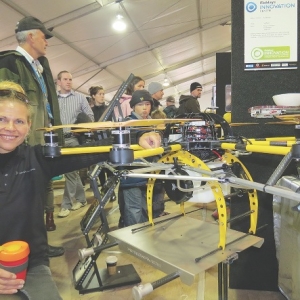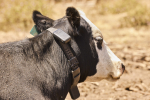Robotics company Droidworx, Waikato, at Fieldays showed its aerial drone with spray tank and booms. Fly it while sitting in the kitchen, if you want to.
Machines like this are used by the film and television industry to carry cameras. But Droidworx director Linda Bulk says farmers who saw the drone at Fieldays enthused about its potential.
Farmers have seen these before; e.g. Massey University demonstrated one a year ago at its annual science day and there was much talk about its potential. And with greater size comes greater payloads, and more options for their use, says Bulk.
“These craft can be fitted with devices such as cameras, sensors or infa red devices allowing for a multiplicity of applications. This includes the monitoring of stock, crops and farm infrastructure such as the state of stock water troughs. You can stop and hover over them and zoom in on areas of interest. That would be difficult and costly using a normal aircraft.”
Spray-equipped, the machine suits spot-spraying weeds such as thistle on hilly terrain or embankments where access is difficult. It can hover and spray individual weeds, saving chemicals and avoiding contamination of sensitive areas.
“Our largest unit can lift 10-15kg but we are about to embark on some trials of larger loads. We’re aiming for a ‘vehicle’ to lift a 20L tank and stay in the air 20 minutes.”
Bulk says people assume flying robotic craft is difficult; not so. You simply steer a flightpath or pre-programme a flight and watch images from the craft’s camera, relayed to your ground station.
Hilly terrain can pose problems, and ideally the machine should be in line of sight with the operator. “If you’ve got it pre-programmed it doesn’t matter. If you are flying it manually and it’s losing radio contact it will fly back to the home position…. But if you’ve got a lot of obstacles and you want to keep control, then you might want to have a repeater station.”
The battery-powered machine’s flying time depends on its payload: the heavier the load, the shorter the distance. At best it’s about an hour, but ten minutes if the load is heavy.

















